Written by: Belinda Brooks
Oral History by: Chief Rodger Lee Collum
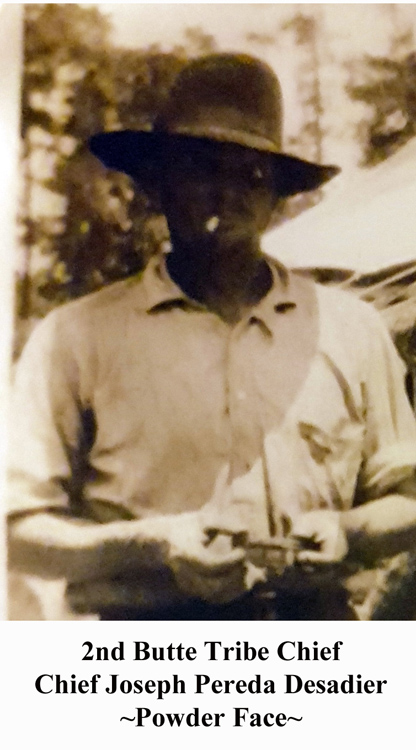
Chief Joseph Pareda Desadier (Joseph Sr.,) 2nd Chief of the Butte Tribe of Bayou Bourbeaux was born February 10, 1798, in the San Fernando Mission at San Antonio, Texas. Listed on the Mission’s baptismal records as his parents were Jose Francisco Pereda and Ana Maria Leal who were both natives of the city. Understanding Catholic baptismal records during the Spanish occupation, one understood that the Spanish’s purpose of converting Native Americans to the Catholic religion was their way of assimilating natives to Spanish culture and claiming their land for Spain. To the ultra-religious Spanish, the indigenous people of America were ignorant heathens who needed salvation.
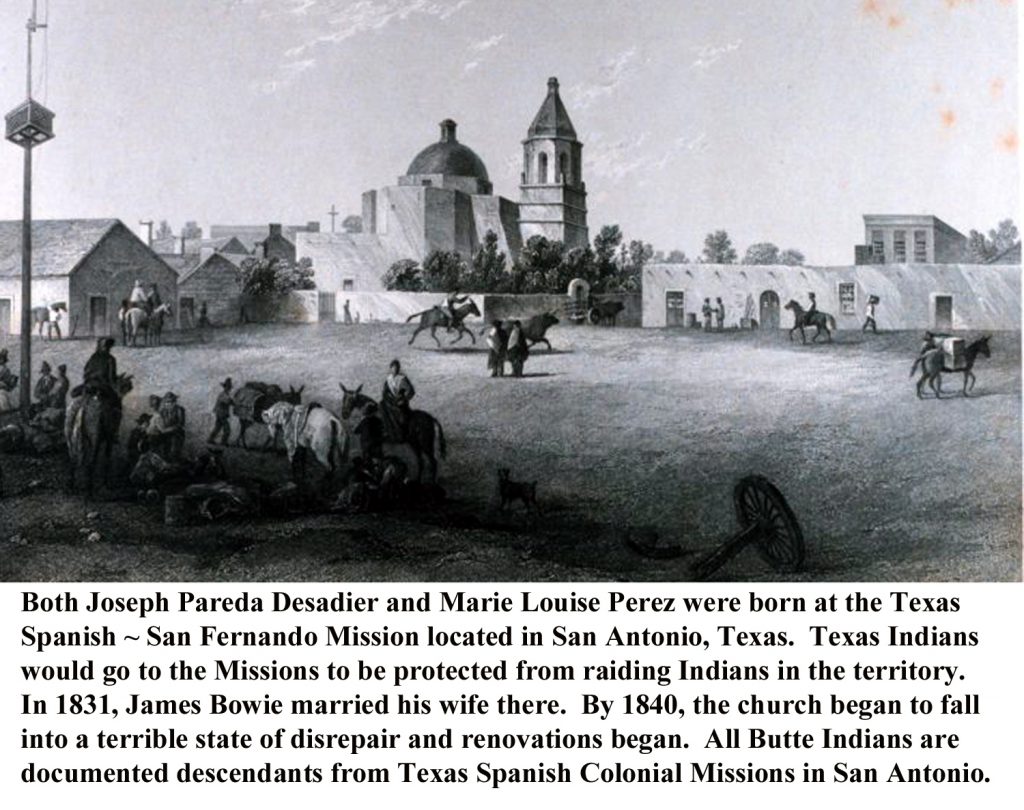
Therefore, Mission Indians were required to be baptized. Upon baptism, the priest would gift each native with a Christian name. That person would then become a Spanish citizen and no longer considered Indian. Christian names given to Joseph’s parents listed above were their baptismal names. Their Native Americans names were White Smoke and Two Moons. The story of their escape from the missions to Bayou Bourbeaux will be revealed in the next and final story of the Chiefs of Bayou Bourbeaux.
As Joseph grew, he earned the native name of Powder Face. When a Butte raiding party would ride out from the village, Joseph’s signature painted face was made with water and white powder. The mixture made a white paint that he used to paint his face solid white. Raiding, killing and torturing their enemies were not given a second thought when it came to protecting their lands and family. Joseph made his first kill at the age of 15. At that time, White Smoke considered his son a man.
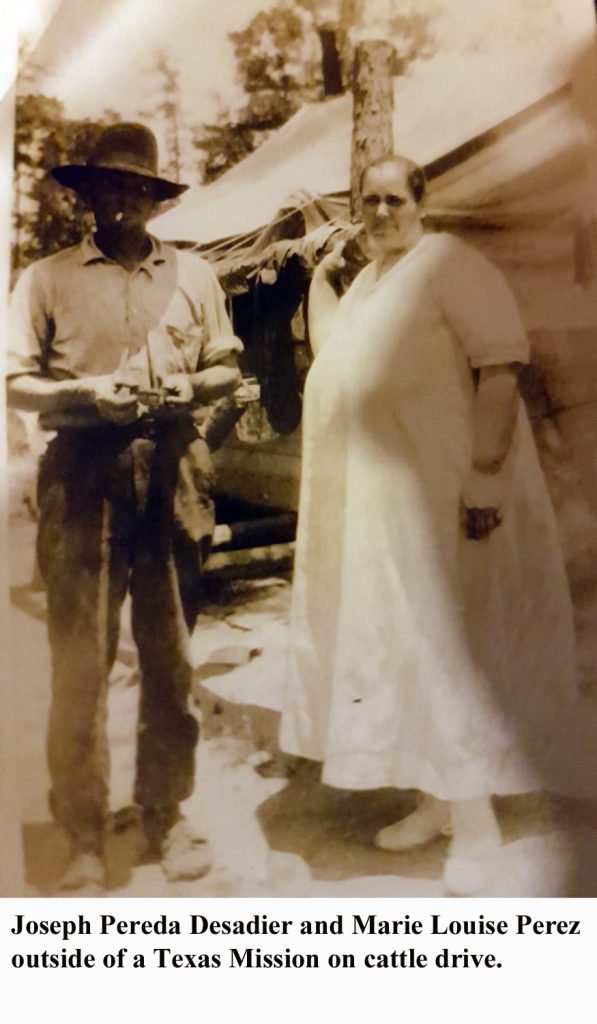
In 1827, Joseph Sr. married Marie Louise Perez. Marie Louise was older than her husband, and like Joseph was born in the San Fernando Mission in San Antonio, Texas. Her family migrated to Louisiana by way of Opelousas, Louisiana. From there, they found their way to Bayou Bourbeaux. She met Joseph there where they raised their family.
TRADE
Trading goods with other tribes and Europeans was a way of life with natives. As a young man, Joseph spent most of his life on the rivers and trails of North America bartering for goods needed by the family. The most popular trade item Buttes had was salt which was gathered from the Goldonna salt licks. Goldonna’s clan was part of the Butte Tribe. Joseph and other young tribal braves would travel the Saline Bayou to Goldonna, back to the Red River; from there, the band of braves would go south to New Orleans, Mexico, South America, or travel north. Butte Tribe traded for items such as bear grease, flint, rock, etc. These trips could last as long as six months or longer. When the braves returned, their first stop would be at the temple mound. There they would leave their best gifts and make their way to the village. The tribe would celebrate by sitting around fires, smoking pipes, telling stories, singing, dancing, and eating specially prepared foods.
PROTECTING BUTTE LAND
Joseph Pareda Desadier was raised on the Louisiana prairie grass and bayou land of Bayou Bourbeaux. His father, Chief White Smoke, moved his people to this land shortly after his birth in 1798. White Smoke controlled all the lands and tribes in the Bayou Bourbeaux area. The prairie grassland was abundant with thousands of buffalos and other wildlife. The buffalo was very important to the survival of the Indians. Native Americans would only kill enough buffalo to supply their needs. Every part of the buffalo would be used and nothing wasted.
Since the Louisiana Purchase in 1803, White Smoke met with the territorial Indian Agent, John Sibley. Sibley’s main job as agent was to prepare area tribes for governmental land survey. Sibley assured White Smoke of the “Great White Father’s,” President Thomas Jefferson’s, promise that Butte tribal land would be held as sacred land and the government would not take one acre of their land without White Smoke’s consent. Having lived and escaped from the Texas Missions, White Smoke had no trust in the words of white men. Joseph was raised with the knowledge of all the things that his people had lived through.
As time passed and the government changed leaders, Andrew Jackson became the 7th President of the United States in 1829. Jackson wasted no time targeting Native Americans. In his 1829 State of the Union Address, Jackson called for removal of Native Americans from the southeast to Texas and Oklahoma territories. By forcibly removing the Native Americans west, the Southern states would gain the ill-gotten land that belonged to the natives. The Indian Removal Act was signed in 1830 and put into action immediately.
Joseph and his father were waiting. European settlers had tried to claim their land many times before. Their plan was put into action. The family would first assimilate to the white man’s ways. Then, they would watch and be ready. Next, everyone knew what shutting down the bayou meant. It had happened before. It would happen again. Beware to settlers who dared to cross Butte land!
CATTLE DRIVES
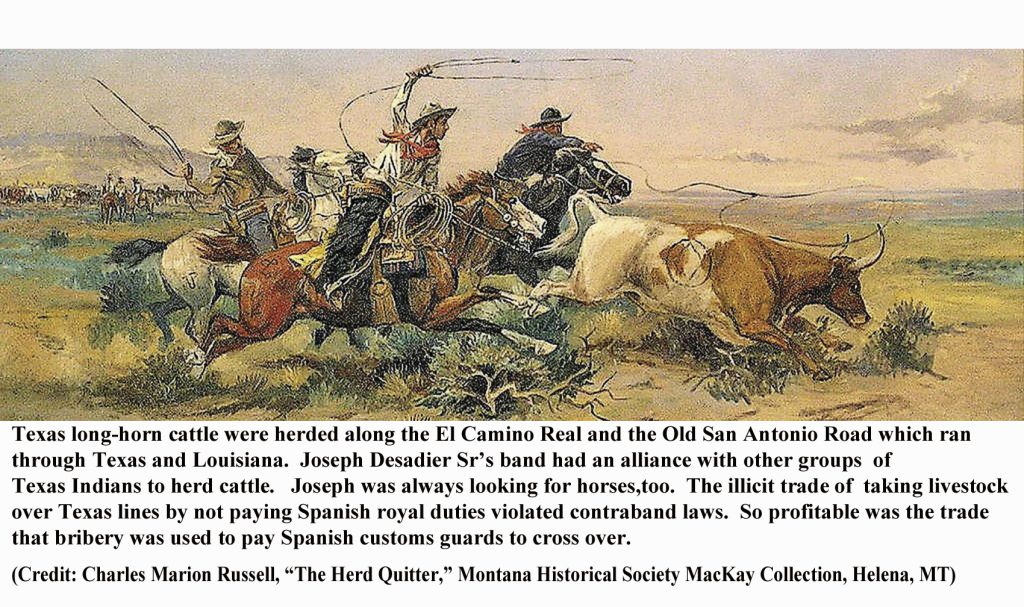
As time passed, white settlers soon found their way to the bayou lands. Oddly enough, there were no white settlers on Butte land. But, the rich land and abundance of wildlife around Natchitoches Parish were too enticing for settlers to resist. They started marking off land near Butte land with no thought of natives who had lived on the land for hundreds of years. Buffalo were being slaughtered. Contention between Native Americans and whites were high. The senseless killing of numerous buffalo for sport by white men left little for the natives’ lifestyle. By the 1830s, there were very few buffalo left on the prairie.
Joseph had to start a new chapter in the lives of his people. Horses and Texas long-horns were where Joseph’s new interests lie. Joseph would travel anywhere to find the fastest, most stunning horses. He was known far and wide for his outstanding walking and quarter horses. Texas long-horn cattle were free-range cattle. They were there for the taking and the market was in high demand. One steer could bring ten times its cost. As a good business man, Joseph couldn’t pass that up. He with his band of men traveled the El Camino Real and Old San Antonio Trail often to return with hundreds of heads of cattle to sell or trade on the open market in New Orleans or at the docks on the Mississippi River.
Joseph ‘s wife, Marie Louise was away from her home one day when she was attacked by a raiding group of Indians led by a warrior named Red Hawk. She took an arrow to her arm, was scalped, and left for dead. Within a short time, Joseph got word of the attack. It only took a few minutes to don his painted face, saddle up his fastest, gather his raiding party and hit the trail heading for St. Maurice.
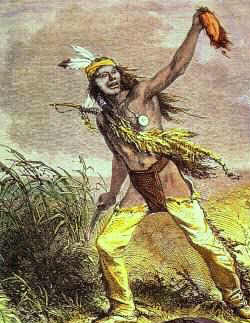
Joseph aka “Powder Face” knew his enemy, Red Hawk, well. Red Hawk and his men were known for stealing livestock and killing settlers in the surrounding area. The attack on Marie Louise may have been by accident with Red Hawk not realizing who he was attacking until the deed was done. Whatever the case, he had Powder Face to deal with now. The two bands clashed on the trail to Winn Parish near St. Maurice. Powder Face, angry and ready to draw blood, rushed in on the offending band of Indians. He only had tunnel vision for Red Hawk. As he drew near to Red Hawk, he leaped from his horse with a sharp war-cry and attacked. Both warriors hit the ground, quickly jumping to their feet, and drawing their knives for hand-to-hand battle. Powder Face drew first blood by slicing Red Hawk across the face. He gave his rival a wicked grin. As was his custom, he backed fair enough away to taunt Red Hawk for his weakness. Red Hawk reached up to touch the deep slash on his face. In anger, he rushed toward Powder Face who stepped aside taunting Red Hawk again with a sparkle in his eyes. As Red Hawk turned around, Powder Face went in for the kill. The battle ended quickly after that with Red Hawk’s bloody scalp dangling from Powder Face’s lance. Powder Face kept the scalp on the end of his spear until the day he died. He was buried standing up with his arms folded around his lance adorned by Red Hawk’s scalp. As for Marie Louise, she recovered from the scalping, but her hand became infected and she eventually lost two fingers.
BUFFALO KILL
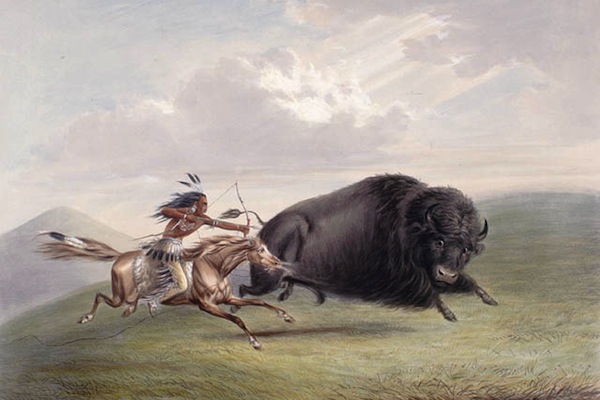
Another story that was told by the elders was about Joseph’s buffalo kill. There were few buffalo on the prairie. Joseph decided that he was in need of a buffalo to feed his family. As there was no refrigeration, the buffalo meat would be shared among the tribe families. The remaining parts of the animal would be used for other essential needs. He rode out to the prairie to find his mark. It didn’t take long to spot his buffalo. He rushed toward the buffalo with his lance held high. He hurled the lance in such a way that the spear pierced the buffalo through and through, killing it instantly, and pinning it to the ground. Looking back at his kill as he rode forward, Joseph saw the buffalo laying on the grass, the lance standing straight up with Red Hawk’s scalp blowing in the wind.
JIM BOWIE

Jim Bowie of Alamo fame and his younger brother, Reazin, spent the majority of their lives in Louisiana. Although Bowie has been honored for his stand in the Alamo, the truth of the story as the people in the Rapides, Winn and Natchitoches Parish knew it was that Bowie was a con-man, thief, killer and chaser/seller of slaves. His history with Butte Indians began early during White Smokes reign as chief, but Joseph Sr. had a run-in with him one night near the lost San Saba Silver Mines in Texas in the 1830s. Joseph’s band partnered with a small group of Texas/Caddo Indians to round-up steers to sell in Louisiana. They were camped down for the night when in the distance they heard horses riding in. Joseph and his band readied themselves for a fight. Whoever it was, at this time of night, was up to no-good.
When Bowie neared the camp, he and his men were ambushed by Joseph’s group. Bowie fought Powder Face aka Joseph Sr. in semi-darkness. In the fight, Joseph sliced Bowie across his arm. As was the way of both, White Smoke and Powder Face, Joseph backed off to return again for the kill. In the process of doing so, Bowie and his men ran into the darkness without their horses. Butte braves circled their animals and camp for the rest of the night. In the early morning, they rose, gathered their property with the additional horses left by Bowie and headed toward Louisiana leaving Bowie and his men on foot to tell their story.
DEATH OF POWDER FACE

Consumer demand for cattle following the Civil War caused a booming market economy. Steers costing $3 in Texas could easily bring the ranchers $30 a head on the open market. Therefore, Joseph was very active in the cattle trade.
One steamy, hot July day in 1868, Joseph Sr. was herding long-horn steers across Saline Bayou to market them at the Mississippi River docks in Concordia Parish, Louisiana. As Joseph moved on his horse across the bayou, a long-horn steer broke out from the herd from behind him. The steer’s horn poked the horse’s rump unexpectedly as the steer moved up to incase Joseph and his horse between cattle on all sides. Joseph’s horse was startled which caused Joseph to fall to the side of his saddle. His foot tripped up in his stirrup. Cattle continued to move forward pulling Joseph down beneath the water where he was unable to recover his balance and he drowned.
The Chief was buried about three-quarters of a mile from his 3rd great- grandson’s home, the 6th Chief of the Butte Tribe, Chief Rodger Collum. Joseph Jr. buried his father there with honors, standing up, with his arms folded around his sacred lance. Dangling from the lance ~ Red Hawk’s scalp.
